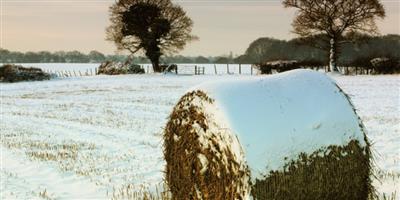Written by Emily Meccage, Forage Extension Specialist, Montana State University
Last year heading into winter, a lot of the state was struggling to find enough forage to feed their animals and fill their hay yards. Most of the state experienced a severe drought, with many areas also dealing with significant wildfires. This left us in a tough spot heading into winter, and coming out of winter didn’t look much better- we had some of the lowest hay stores on record for Montana in spring 2018.
Fast forward a little bit, and producers were pretty happy with all of the rain we received early in the season. In exception to the northeast corner, the majority of the state was no longer listed in a drought, and some areas had even near-record rainfall. Coupled with cooler temperatures, we had great quality spring pastures that were able to relieve winter feeding grounds and producers’ depleted hay stacks. We were fortunate that the summer was fairly close to average, with at least minimal drought conditions recorded. And now that we are having great fall moisture, we are setup pretty well for this winter.
Many producers learned an unfortunate lesson last year, and have increased their hay storage amounts this year to avoid similar issues next spring. We also were able to produce large amounts of hay to put on the market, which has been fairly slow thus far. Prices are close to average and pretty similar to last year, with supreme alfalfa selling for $180 for large squares, and good quality going for $120-140. Grass/ alfalfa mix is close to the same price, around $120-140 currently. We currently are sitting on a healthy supply of hay moving into winter, which may affect prices unless the market begins to pick up significantly.
Export markets for hay are looking very healthy, with a lot of the hay moving south to states that did have significant drought, or to export from the coasts. Most of this hay is being sent to countries in the pacific, where we are seeing increases in animal production and forage demand, particularly for high quality alfalfa.
Producers are looking at a pretty healthy pasture situation heading into winter this year as well. Eastern Montana did get pretty dry this summer, but with the fall moisture many fields are starting to perk up. It is still advised to take care and not push your forages too hard going into winter, and being mindful that this is the most important time of the year to allow forages rest and to regenerate their energy stores. This goes for both pastures and hay fields.
In general, we recommend to allow for 30-45 days between the last harvest and the first killing frost on your hayfields to allow for energy storage. Harvesting after the killing frost is recommended over harvesting within that window, as we will minimize damage to those plants. For grass pastures, it is ideal to have at least 10-14 days between grazing and the first killing frost. Additionally, trying to rotate which pasture is being grazed each fall, if possible, or allowing for adequate stubble height will help to limit potential for winter injury. And for some insight into a new project the Forage Team is starting, this winter we have several sites where we are going to be evaluating impacts of winter grazing on hay fields based on some really interesting preliminary data from last year. So stay tuned for those results!


